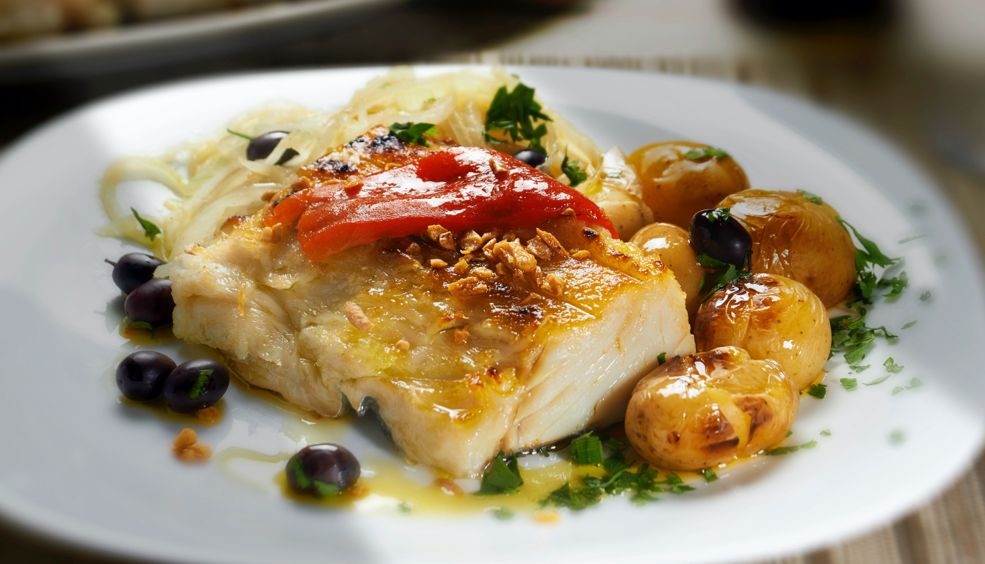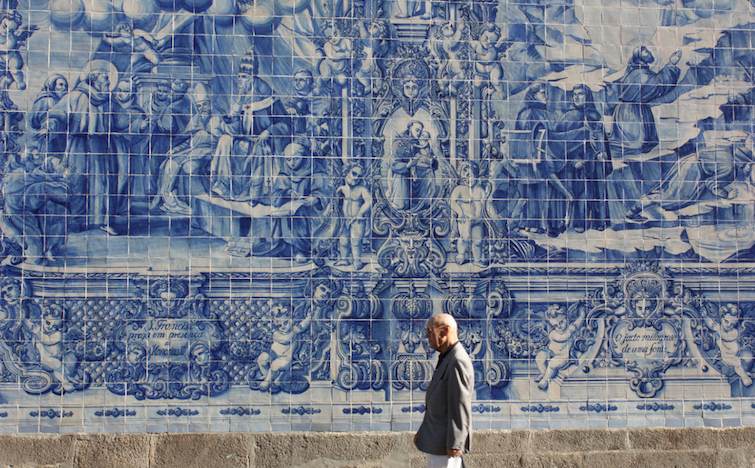GASTRONOMY IN PORTUGAL: A USEFUL LITTLE GUIDE ON THE SECRETS OF COD
Cod is a major institution in Portugal. Across the length and breadth of the country, you'll find it on every menu every day. Which is why we've prepared a useful little guide to help you learn more about this fish, including its history as well as the cultural and gastronomic aspects. And make no mistake… you'll be licking your fingers!
more infoCatching the Best Waves in Portugal
A land fringed with some 1,800 kilometres of coastline opening onto the wild Atlantic, where winds and currents drive the build-up of waves, is bound to be the perfect destination for surfers. We now reveal the reasons why Portugal exerts such a pull on surfers and pinpoint some of the best beaches for doing this thrilling sport.
Why Surfing in Portugal Rocks
Waves of all sizes and for all tastes. The long Portuguese coastline has ample room for everyone wanting to surf, be they beginners or those who have had loads of waves behind them; that is, under their surfboard.
The good climate. In Portugal, the weather is usually good most of the year around, except in winter, when temperatures go down. The rest of the year is conducive to having a good dip with your surfboard in tow.
The food is fantastic. After a hard day’s riding waves, regaining your strength by downing some great sardinhas asadas (grilled sardines) or savouring an exquisite dish of bacalhau à brás codfish is a delight on the palate.
Affordable prices. In Portugal it is comparatively easy to find quality food and accommodation at more than reasonable prices. What more could you ask for?
The Best Beaches for Catching Waves
Portugal boasts a vast array of surfing beaches, but here are the most outstanding ones:
Ericeira
Apart from being a charming fishing village, Ericeira, situated 30 kilometres north of Lisbon, is one of the favourite destinations for surfers heading for Portugal. It has the distinction of being Europe’s first listed World Surfing Reserve on account of the quality of its waves, the great number of surfing spots and its environment. One of the most prominent spots is the area of Coxos, a small cove with waves of up to 5 metres high, suitable only for daredevils. Another of the noteworthy enclaves is around Ribeira d’Ilhas, ideal for all kinds of surfers and well-known for its beach bars, where people congregate to refuel and socialise. Any time of year is suitable for surfing on these beaches.
Peniche
Situated in the central area of Portugal’s coastline, Peniche offers what is probably the best set of surfing beaches in the country and draws enthusiasts from all over Europe. One of the best beaches is Supertubos – known among surfers as “Eurotube” – with powerful waves that will meet all surfing aficionados’ expectations. Its reputation has earned it the honour of hosting the world surfing championship once a year. Apart from surfing, its beaches are also ideal for bodyboarding and diving.
Nazaré – Praia do Norte
Like Peniche, it is situated in the central stretch of the country’s seaboard. The American, Garrett McNamara, has the honour of having surfed the biggest wave this year, an amazing 20-metre-high wave on the Praia do Norte. Indeed, herein lies the particularity of this spot on the coastline, where waves can often get to 10 metres, which is therefore a major draw for the big riders. The best time of year for viewing and experiencing this marvel of nature is in winter.
Arrifana
Situated on the Costa Vicentina in the northern Algarve, Arrifana is another of those destinations surfers should be considering. The beach is flanked at both ends by cliffs, accessed by a steep stairway. Apart from being a surfing spot, visitors to this area can also enjoy nature in the magnificent South-west Alentejo and Vicentine Coast Natural Park. The best time for surfing here is in early spring, as in summer it tends to get overcrowded.
Sagres
Also located in the Algarve, Sagres has become a veritable surfing hub. It is the ideal spot for signing up for a Surf & Yoga course at the Freeride Surf Camp, where surfing goes hand in hand with meditation, and for going on a boat ride, ideal for enthusiasts of whale- and dolphin-watching.
Book your Vueling, bring your board along and let yourself get carried away by the waves of Portugal.
Text by Los Viajes de ISABELYLUIS
Images by SayLuiiiis, Hendrik Dacquin, Hugo Silva
more infoThe Azulejo Tiles of Portugal
When you first visit Portugal, one of the things that invariably catches your eye is the pervasive presence of ceramics and wall tiles in ornamentation. Whether used as wall facings on the inside and outside of buildings – on churches, palaces or private homes, both in large cities and small villages – ceramic tiles are king in Portuguese decoration. Unlike the rest of Europe, where they are used more sparingly, in Portugal they seem to take over the walls. They feature in two major varieties – polychromed tiling and the signature blue-and-white combination, some of which are technically and aesthetically superb.
This cultural heritage of Moorish origin first took seed in Portugal in the 15th century, having entered the country via neighbouring Spain. It soon became the wall facing of choice among Portuguese royalty. The use and quality of ceramic tile decoration reached their zenith in the 18th century. Nowadays, azulejos are still very much in vogue and large workshops continue to operate.
While ceramics are in evidence throughout the country, following is a selection of the leading sites. They are well worth visiting – both for the exquisiteness of their ornamentation or owing to the presence of a large production centre.
Lisbon
As befits a capital, Lisbon is graced with numerous examples of azulejo tile facings, which even cover the walls of the city’s metro system. Among some unusual landmarks to be found in the city is the Quinta dos Azulejos, housed in the Colégio Manuel Bernardes on Paço do Lumiar street. The sheer decorative beauty of the scenes depicted on the walls in the garden is simply stunning.
However, the main reason for including Lisbon in this tour is the Museu Nacional do Azulejo, where visitors can learn all the ins and outs, production techniques and history of this quintessentially Portuguese element of architectural ornamentation. It is also a good point to start off the tour.
Aveiro
This small, beautiful city, also called the “Venice of Portugal” for its canals, which you can sail along in colourful boats known as moliceiros, is enchanting in itself. A coastal city famed for its fishing and salt production, it has a beautiful centre with outstanding examples of Modernist buildings. The authentic jewel of this city is the Railway Station, striking for its ceramic ornamentation and a fitting final flourish to any visit here. The polychromed azulejos feature depictions of railway scenes, as well as motifs from nature, culture and traditional activities. And, while you are in the city, be sure to see the beach with its bathing boxes painted in colourful stripes.
Ovar
This coastal city is worth visiting for its beaches, but it also boasts a large number of public buildings adorned with azulejos, most of which come from the factories at Vila Nova de Gaia and Aveiro. The plethora of tiled wall facings has earned Ovar the nickname of the “Azulejo Museum City”.
Válega
Just six kilometres from Ovar lies the village of Válega, where you should make a point of visiting the Church of Nossa Senhora do Amparo. Its walls are faced, both inside and out, with mostly polychromed tiles, except for the external side walls and back, which are bicoloured in blue-and-white tiles. Construction work on the church began in 1746 and lasted for a whole century.
Ilhavo
Ilhavois noteworthy above all for its Vista Alegre Factory, one of the most internationally acclaimed sites in Portugal. Founded by José Ferreira Pinto Basto in the early 19th century for glass and porcelain production, it houses a museum where visitors can learn about ceramics culture through the collections on display and the values associated with Vista Alegre.
Book your Vueling to Lisbon and discover for yourself this wonderful ceramic ornamentation on Portuguese buildings and monuments.
Text by Los Viajes de ISABELYLUIS
Images by Sunny Ripert
more infoDiscover Lisbon, host city of the 2018 Eurovision Song Contest
Last year, Portuguese music was victorious for the first time at Eurovision thanks to Salvador Sobral and his song, "Amar pelos dois". So this year the song contest will be held in the capital of Portugal and the entire city is already getting ready for such an important event. So whether you've got a ticket to the 2018 Eurovision Song Contest or not, we would like to invite you to discover Lisbon.
more info




